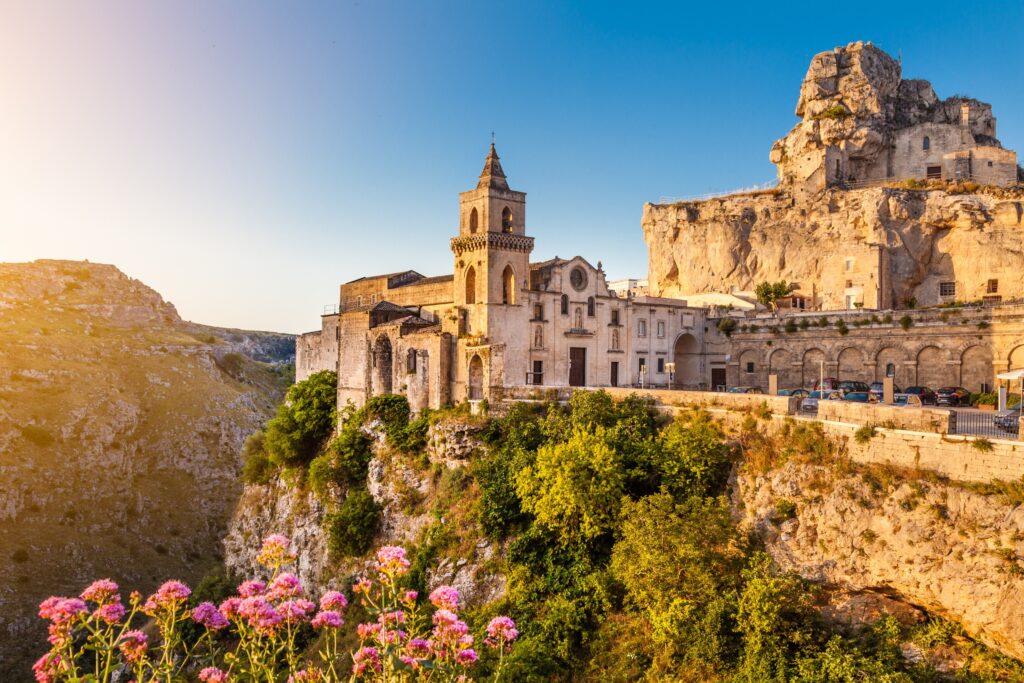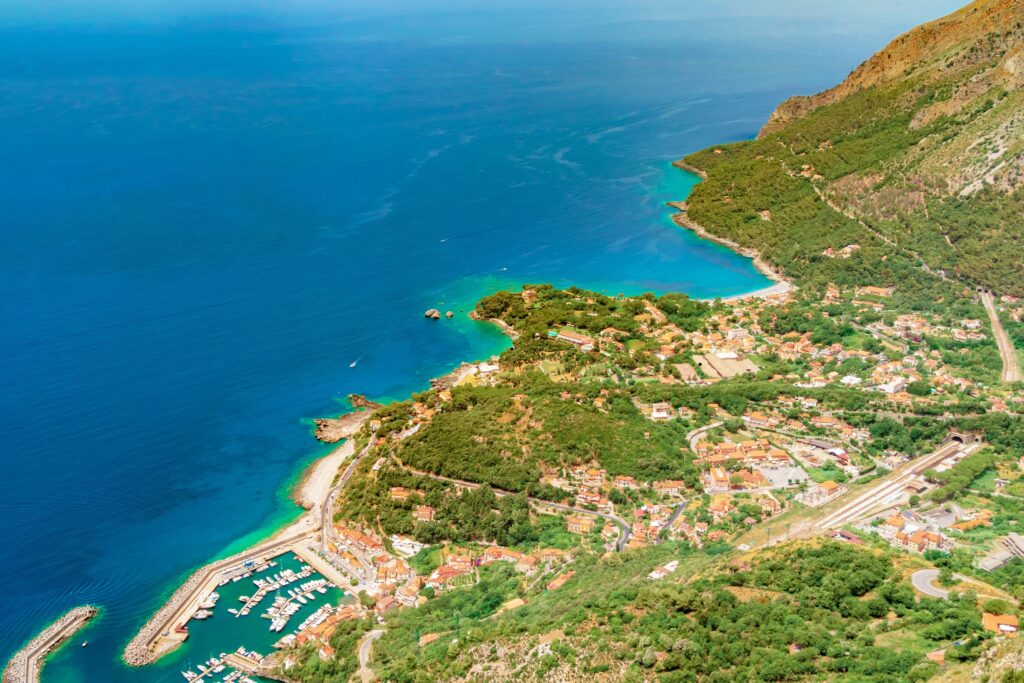Basilicata is a region that captivates with its rugged landscapes, ancient history, and vibrant cultural traditions. Often overlooked by tourists, Basilicata offers a wealth of experiences for those willing to venture off the beaten path. Let’s explore the various aspects that make Basilicata a must-visit destination.
Location and Climate

Basilicata is bordered by Campania to the west, Puglia to the north and east, and Calabria to the south. The region has a short coastline along the Tyrrhenian Sea to the southwest and the Ionian Sea to the southeast. Basilicata’s landscape is characterized by mountainous terrain, rolling hills, and fertile plains.
The climate in Basilicata varies depending on the area. Coastal regions enjoy a Mediterranean climate with hot, dry summers and mild, wet winters. Inland areas experience a more continental climate with colder winters and warm summers. This diverse climate supports a variety of agricultural activities and offers favorable conditions for tourism year-round.
Historical Tapestry

Basilicata’s history is as rich and varied as its landscape, influenced by numerous cultures and civilizations over millennia. Key historical periods include:
Ancient Greeks and Romans
Basilicata was part of Magna Graecia, a region colonized by the ancient Greeks. Cities such as Metapontum and Heraclea were important centers of Greek culture. The Romans later took control, leaving behind a legacy of roads, aqueducts, and ruins.
Byzantine and Norman Rule
During the early Middle Ages, Basilicata was part of the Byzantine Empire, which left a significant cultural and architectural impact. The Normans later conquered the region, further shaping its historical and cultural landscape.
Medieval and Renaissance Periods
Basilicata experienced various feudal dominations, including the Angevins and Aragonese, contributing to the region’s diverse architectural styles and historical sites.
Modern Era
Basilicata became part of the Kingdom of Italy in the 19th century. Today, it is known for its agricultural productivity, cultural heritage, and stunning natural beauty.
Key Cities

Matera
The capital of Basilicata, Matera is renowned for its ancient cave dwellings, known as the Sassi di Matera, which are a UNESCO World Heritage site. Key attractions include the Matera Cathedral, the rock-hewn churches of Santa Maria de Idris and San Pietro Barisano, and the Casa Grotta di Vico Solitario.
Potenza
The regional capital, Potenza, is known for its historic center, beautiful parks, and panoramic views. Highlights include the Potenza Cathedral, the Torre Guevara, and the Archaeological Museum of Basilicata.
Melfi
This medieval town is renowned for its well-preserved Norman Castle, which houses the National Archaeological Museum of Melfi. The town also features the beautiful Cathedral of Santa Maria Assunta and numerous historic churches.
Maratea
Known as the “Pearl of the Tyrrhenian,” Maratea boasts stunning coastal scenery, charming historic center, and beautiful beaches. Key attractions include the Statue of Christ the Redeemer, the Maratea Cathedral, and the numerous sea caves and coves.
Policoro
An important archaeological site, Policoro offers a glimpse into Basilicata’s ancient Greek past. The ruins of the ancient city of Heraclea, the National Archaeological Museum of Siritide, and the beautiful beaches are must-see attractions.
Culinary Delights

Basilicata’s cuisine is celebrated for its bold flavors, simplicity, and use of fresh, locally sourced ingredients. The region is known for its hearty dishes, preserved meats, and robust wines. Key culinary highlights include:
Pane di Matera
A traditional bread made from durum wheat, Pane di Matera is known for its unique shape, crispy crust, and soft interior.
Pignata
A traditional lamb stew cooked slowly in a clay pot, Pignata is often flavored with herbs, potatoes, and vegetables.
Salsiccia Lucanica
A spicy sausage made from pork, Salsiccia Lucanica is seasoned with fennel, chili, and other spices, reflecting the region’s bold flavors.
Peperoni Cruschi
Dried, crispy red peppers that are often used as a condiment or snack, adding a distinctive flavor to various dishes.
Aglianico del Vulture
A robust red wine made from Aglianico grapes grown in the volcanic soil of Mount Vulture, Aglianico del Vulture is one of Basilicata’s most famous wines.
Agricultural Highlights

Agriculture plays a central role in Basilicata’s economy, with the region producing a variety of high-quality products. Key agricultural highlights include:
Wheat
The fertile plains of Basilicata are ideal for growing wheat, which is used to produce high-quality bread and pasta.
Olive Oil
Basilicata produces excellent extra virgin olive oil, characterized by its robust flavor and high quality, used extensively in local cuisine.
Wine
The region boasts a rich winemaking tradition, producing notable wines such as Aglianico del Vulture, Greco di Matera, and Primitivo di Manduria. The region’s vineyards benefit from the ideal climate and terrain.
Vegetables and Legumes
Basilicata’s fertile plains are ideal for growing a variety of vegetables and legumes, which are staples in the local diet.
Tourism and Major Attractions

Tourism in Basilicata is diverse, with visitors drawn to its historical sites, natural beauty, and cultural events. Major attractions and activities include:
Sassi di Matera
Explore the ancient cave dwellings of Matera, a UNESCO World Heritage site, which offer a fascinating glimpse into the region’s history and architecture.
Pollino National Park
This national park offers a range of outdoor activities, including hiking, wildlife watching, and exploring the beautiful Pollino Mountains. The park is home to diverse flora and fauna and stunning landscapes.
Vulture Area
Visit the Vulture region to explore its volcanic landscape, ancient castles, and renowned vineyards. Key attractions include the Monticchio Lakes, the Abbey of San Michele Arcangelo, and the medieval town of Venosa.
Metapontum
Discover the ancient Greek ruins of Metapontum, including the Temple of Hera, the archaeological museum, and the ancient theater.
Maratea Coast
Enjoy the stunning beaches, sea caves, and crystal-clear waters of Maratea. Popular activities include swimming, snorkeling, and exploring the charming historic center.
Things to See and Do

Whether you’re interested in history, nature, or gastronomy, Basilicata offers a wide range of activities to suit all interests. Here are some top recommendations:
Explore Ancient Ruins
Visit the archaeological sites in Matera, Metapontum, and Policoro to delve into the region’s ancient Greek and Roman heritage.
Relax on the Beaches
Basilicata boasts some of Italy’s most beautiful beaches, including those in Maratea and Policoro. Enjoy the sun, sea, and sand in these stunning coastal locations.
Hike in National Parks
Discover the natural beauty of Pollino National Park and the Vulture area through hiking, wildlife watching, and exploring the diverse landscapes.
Taste Local Cuisine
Sample Basilicatan specialties such as Pane di Matera, Pignata, and Aglianico del Vulture at local markets, trattorias, and festivals.
Visit Historic Towns
Wander through the charming streets of historic towns like Matera, Melfi, and Venosa, each offering a unique glimpse into Basilicata’s rich cultural heritage.
Conclusion
Basilicata, with its rugged landscapes, rich history, and vibrant culture, is a region that offers something for everyone. Whether you’re exploring ancient cave dwellings, savoring local cuisine, or relaxing on pristine beaches, Basilicata provides an unforgettable experience. This southern Italian gem is a must-visit destination for anyone seeking to discover the diverse and enchanting charms of Italy.




